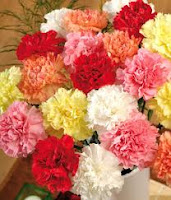THE MAIDENHAIR TREE, GINKGO BILOBA
The first Ginkgo biloba tree planted in Britain Kew Gardens Kew , and the original tree is one of the “Great British Trees” listed by the British Tree Council in a scheme which celebrated Queen Elizabeth II’s Golden Jubilee.
 The trees are native to a small area in
The trees are native to a small area in  The tree was first recorded scientifically by Kaempfer in 1690, and prior to that we have its external uses documented by Lan Mao in his work, Dian Nan Ben Cao which dates back to around 1436 and the Ming dynasty. It was used to get rid of freckles and for skin and head sores. In 1505 Liu Wen wrote Tai Ben Cao Pin Hui Jing Yao which describes the internal use of the leaves to treat diarrhoea.
The tree was first recorded scientifically by Kaempfer in 1690, and prior to that we have its external uses documented by Lan Mao in his work, Dian Nan Ben Cao which dates back to around 1436 and the Ming dynasty. It was used to get rid of freckles and for skin and head sores. In 1505 Liu Wen wrote Tai Ben Cao Pin Hui Jing Yao which describes the internal use of the leaves to treat diarrhoea.  Modern research has shown that the leaves have properties which can lower blood pressure and cholesterol levels and have some value in the treatment of angina pectoris. In the West the trees have been planted in plantations for use in medicines as Western research (there have been about 500 studies in the last 20-30 years) seems to have proved that the leaves and extracts from them are helpful in macular degeneration, improve the cognitive functions including age-related memory loss associated with Alzheimer’s and age-related dementia. They can also help in cases of depression, attention problems, information-processing and other neuropsychological problems. They also help with relieving PMT/PMS symptoms, tinnitus, vertigo, and in preventing altitude sickness. Studies have also found that they can arrest liver fibrosis associated with chronic hepatitis B and the bioflavonoids protect the cell walls and improve blood circulation. The leaves are also a help in cardio-vascular diseases.
Modern research has shown that the leaves have properties which can lower blood pressure and cholesterol levels and have some value in the treatment of angina pectoris. In the West the trees have been planted in plantations for use in medicines as Western research (there have been about 500 studies in the last 20-30 years) seems to have proved that the leaves and extracts from them are helpful in macular degeneration, improve the cognitive functions including age-related memory loss associated with Alzheimer’s and age-related dementia. They can also help in cases of depression, attention problems, information-processing and other neuropsychological problems. They also help with relieving PMT/PMS symptoms, tinnitus, vertigo, and in preventing altitude sickness. Studies have also found that they can arrest liver fibrosis associated with chronic hepatitis B and the bioflavonoids protect the cell walls and improve blood circulation. The leaves are also a help in cardio-vascular diseases. The trees change colour in autumn and the oldest one in
The trees change colour in autumn and the oldest one in The seeds have to be thoroughly cooked before they are eaten as they contain a toxin, but when roasted they are said to taste. Like pinenuts or sweet chestnuts.
It is thought that the tree population was depleted due to deforestation, but even though there are no conservation projects to protect the ginkgo trees, there are so many planted around the world and their health benefits are widely known, so it is unlikely that they will face extinction at least in the near future.




















